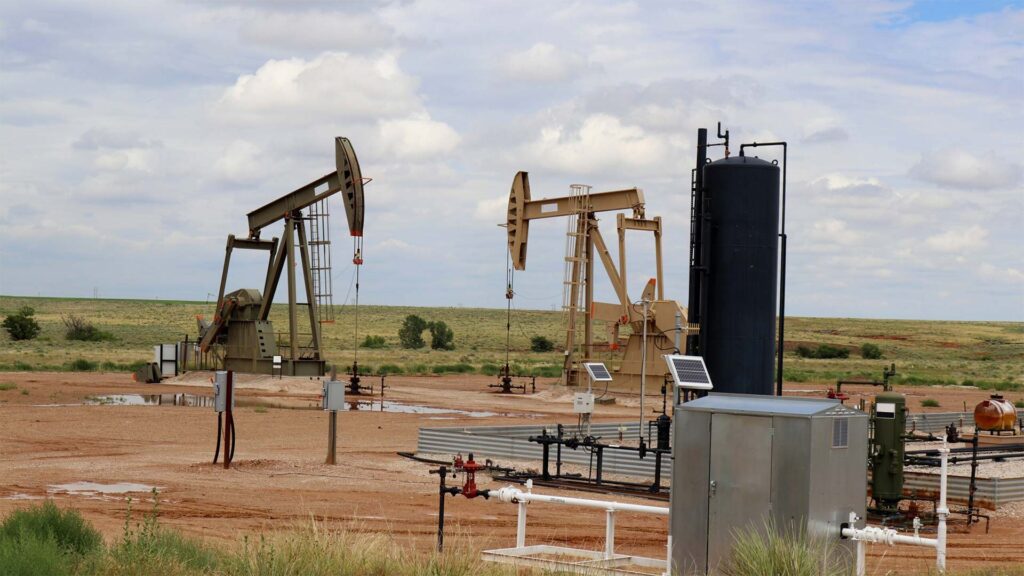The oil and gas industry has always been subject to upturns and downturns, but the last few years have seen dramatic changes to the industry’s landscape. The cycle of boom and bust is less like a predictable pattern and more like riding a roller coaster blindfolded. Volatility is not new in the industry, but it has been increasing rapidly in recent years and companies need to either learn how to adapt to the new landscape or face possible collapse. The oil and gas industry is at a tipping point, and new strategies and methods will be needed to not only stay afloat, but to thrive in a constantly changing environment. Success will hinge on the ability to adapt to changes quickly, optimize oil and gas resource management, and carefully evaluate risks. With such drastic changes needed to survive increasing volatility, you may be wondering exactly how the industry got to this point.
What Caused This Roller Coaster?
Most things in life are cyclical, which is why the oil and gas industry has had so many booms followed by so many busts. However, this cycle is being interrupted (or put into hyperdrive) by a wide variety of factors both foreign and domestic. Firstly, environmental regulations are rapidly changing this old industry. Many countries are instituting regulations to encourage more environmentally-friendly energy production. This leaves oil and gas companies not only constantly jumping through regulatory hoops, but also concerned about the future demand for oil as consumers increase consumption of renewable energy. Companies are trying to invest in renewable energy to meet increasing demand, which puts traditional oil and gas projects on the back burner in many aspects. But beyond regulations and changing demand for different types of energy, the industry has also been rocked by changing foreign policies. The extraction, production, and sale of oil is an international business, which means it can be greatly affected by the politics between countries.

Finally, the industry is also subject to the economics. Recessions have a profound effect on the oil and gas market in many ways. Recessions and other large economic swings alter the demand for oil from consumers. And it’s not just the U.S. that could threaten the industry with a recession. Even developing countries could have an impact on the industry. When developing countries consume less oil than forecasted because of economic downturns, the industry feels and absorbs these issues. When you consider all of these fluctuating factors, it’s easy to see how the industry has been pushed into the realm of uncertainty.
Facing an Uncertain Future
The oil and gas industry has long been a “go with your gut” kind of business, but this just won’t cut it anymore. Oil and gas companies need more than a gut feeling to weather the volatility storm currently taking place. The problem is that planning for uncertainty is not easy. How do you prepare for the future of your oil and gas company if you don’t know the future of the industry? Or, how will you know which projects to move forward with and which ones should be put on hold? Or, how do you even begin oil and gas resource management if you don’t know what resources you will need? But the difficulty isn’t just trying to make high level plans. Even the most basic plans like when to hire more workers, which workers should work on which project, and how to prioritize projects are all extremely challenging when dealing with an uncertain future.
Mastering Volatility with Meisterplan
Meisterplan supports oil and gas resource management with easy staffing (resource) allocation. Projects can be estimated in man-hours, so users understand how many workers they will need to reach completion based on the desired project end date. Staff can also be assigned to projects on a role, skill or individual level. This means users can assign a “Senior Engineer,” an undetermined individual with “Quality Control” skills, or “Bob Smith” to a project. This also helps companies understand how many workers and what types of skills they might need to hire to finish a project. If certain employees or roles are overbooked, they display in red in the Meisterplan resources section. Because over allocation of staff in Meisterplan is easy and quick to identify, users can plan for adjusting projects to the current manpower or start hiring more workers. Alternatively, resource allocation in Meisterplan also shows users when they have more manpower than work. This helps users understand when they can take on new projects with succesful oil and gas resource management.
Of course, staffing isn’t the only challenge facing oil and gas companies looking for adaptability. Companies also need to decide which projects to work on. Meisterplan prioritizes projects based on user specified criteria. This means things such as risk level, cost, and financial benefit can be used to create a prioritization score. Projects can then be compared based on the prioritization score. This gives companies a much easier understanding of potential projects, their investments, and their value. Users can compare scenarios to see how different project plans provide different benefits and outcomes.
Meisterplan also displays financial information in easy to understand visuals. Each worker or role can be assigned a cost and additional costs can be added in to each project. The total cost of the project and its projected profits are then calculated and displayed graphically so users can manage project budgets. Because a large portion of operating expenses are from staffing, the costs of each project will automatically change when adding or removing workers from a project. Projects that are overbudget will appear in red, letting users know changes will be needed to keep projects on track.
Changes in Meisterplan are as easy as dragging and dropping projects. If a project needs to be moved up, all of the project data like total man-hours needed and operating expenses are updated automatically in real-time. There’s no recalculating of man-hours or the changes in monthly expenditures. This is all done for you. Making changes is easy and effortless, so you can adapt and update your plans as much as needed.
Volatility Doesn’t Have to Be Volatile
The volatility of the oil and gas industry doesn’t have to be volatile for your business. Meisterplan was designed to be adaptable. With Meisterplan, you can easily fluctuate with the industry and not only survive the volatility but thrive. See for yourself how Meisterplan can help your company succeed through volatility by scheduling a one-on-one demo with one of our experts or by signing up for a free 30 day trial.
Read Next

Riedel Conquers Hybrid R&D Projects with Meisterplan’s Strategic Resource Planning



